Every company would love to have more inbound sales.
They represent a steady stream of prospects coming directly to you, signing up and entering your sales funnel, all with the goal of them ultimately becoming loyal, happy customers.
Beyond just sales, they are also a good indicator of a company’s performance and serve as an effective forecast for the health of your business. By checking on the inbound leads coming in, you get a picture of how many deals you can expect to close, what companies you’re attracting, and the revenue you can expect to make in any given month.
But how can you make the most of those leads? I’m going to share with you some of the inbound sales strategies that bring in over 1,000 inbound leads every month to Reply, along with the mistakes you need to avoid.
Carefully target your inbound leads
As amazing as inbound is, there’s also a bad side, one often overlooked by businesses. With outbound sales, you know exactly who you’re talking to.
More than likely you’ve researched your prospects and are reaching out because they’re a perfect fit for your company. However, when it comes to inbound sales, you have little to no control who your leads are.

Sure, some of them might match your ideal customer profile, but plenty of them won’t. Some companies will be too big, some too small, some simply won’t be in the niche you’re trying to sell to. All those conversations and sales processes you go through with these leads will be for nought.
It’s a problem every business with an inbound sales process has to deal with, including Reply. What’s the solution?
While we still have no control over who visits our website and fills out our forms, we can make sure visitors know exactly who we are and what we do. We are able to target our audience using tailored content and clear messaging on our website, so those visitors can quickly tell who Reply is specifically for.
There’s a time and place for inbound
In case it hasn’t been made clear already, I think inbound sales are great. But that doesn’t mean they should be the one and only focus of every business. Outbound sales are still an important part of the process, particularly for startups.
New businesses have to reach out to hundreds (or even thousands) of prospective customers, usually people from their existing network who could be a good fit and use them to validate their product. You don’t hit them with a hard sell; instead, you say something like:
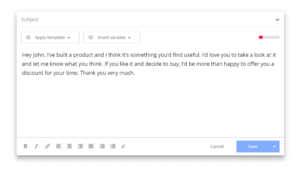
In the early days, you probably don’t have much money to throw around. You need to focus your efforts on the least expensive and most effective outreach, delivering the biggest ROI. Today, that’s cold email. Whether you’re reaching out to prospective customers, investors, partners or affiliates, you don’t want to do that one email at a time.
Inbound sales take time. Your prospects need to know about you, to be able to find you. You need to be putting out targeted content, optimized for your audience, over a significant period of time. In the beginning, that means outbound is your only truly viable option.
However, as your business grows, inbound will start to take over as the primary source of leads. At Reply, we reached a point when we had to temporarily stop our outbound sales because we were simply getting too many inbound leads! Our sales team was booking 10-15 meetings a week, that’s 2-3 a day for each member of the team, all because we were attracting more inbound leads than we could handle.
Make the most of your data
A key principle, one behind many of these tactics, is understanding that there’s more to inbound sales than leads magically coming in, all eager and ready to buy. Inbound sales aren’t magic; they take work, both to procure and to convert.
To start, when a lead comes in from a landing page, you are going to want all the relevant data on them you can get. However, long forms with lots of questions are likely to put off prospective customers.
As a result, many people reluctantly settle for less information, making do with nothing more than a name and an email address.
At Reply, our first step to converting our inbound leads into sales is to enrich the data.
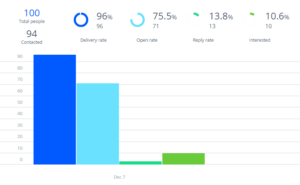 |
Anytime an inbound lead comes in, we want to see all the important details, which for us includes the size of the company and their location. Using tools like Clearbit and Leadiro, our business development team will look at the number of employees, the size of their sales team and their annual revenue, seeing how they match with our ideal customer profile.
 |
Segment and be relevant
Once we have the enriched data, we’re ready for the second step of the process. We send those leads to our sales team and place them in a nurturing campaign along with a 14 day trial of our software. We talk to prospects and walk them through the software.
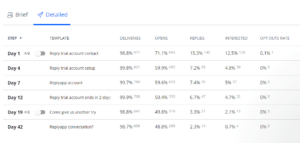 |
It’s important that we spend the right time with the right customers, so we segment those users based on verticals, how they act, how they talk, and more. We are then able to send them content that’s directly relevant to them.
To give you an idea of what this looks like, at Reply, we primarily segment based on company size. For example, with a company of 50 employees, we’ll be very hands on.
Our support staff will chat with them and talk them through the demo step-by-step. Usually, it’s just one, maybe two people on their team who need to see Reply, the ones who will ultimately make the buying decision.
On the other end of the scale, what about a company with thousands of employees and hundreds of salespeople?
Now we try not to just contact the one original lead, but instead, we try to expand into that organization and talk with other sources in the same company. With companies of that size, there are going to be multiple divisions and teams, meaning more prospective leads who are going to want a look at Reply.
We want to make sure we talk to them and give them the attention and the information they need.
Re-nurture with a clear funnel
When inbound leads come in, not all of them are going to convert. In fact, for most companies, 90%-95% of inbound leads won’t convert, and you need to be prepared for that. You need to take those users who haven’t converted and re-nurture. If you want to increase your chances of converting them, you can’t let them go stale. You can’t just send one email and, if they don’t get back, assume that’s the end of the conversation.
I talk to a lot of companies and ask them about their process and what they’re doing for their inbound prospects, how they’re nurturing them. And for most of them, that’s where they stop. They send those 2-3 emails and if they don’t get a response, that’s it. No re-nurturing, just game over.
We typically send 4-5 emails, but we’ll also try to reach out in more ways. Our marketing team will get involved. They take a look at this lead and ask why aren’t they interested in buying. They send them relevant content to nurture them. They surround them in social channels. They place ads.
More importantly, we circle back to the growth team at Reply. They start looking at those not converting, looking internally into those companies, and targeting other people in those same companies. If one person has expressed interest, then there’s a good chance others will too.
If you visited us, we want to nurture you in more than just one way. One drip has a lot of ripples to it within the company.
Bonus: Reply’s Inbound Funnel
To help you see these tactics in action, let’s go deeper and take a look at a typical inbound sales funnel at Reply:
There are two types of inbound requests we get. The first is demo requests. The request comes in and the lead goes into our campaign email sequence, made up of 3 emails. If they respond to the first or second email then Reply automatically stops the sequence. For this kind of request, Meshelle on our sales team is getting an 88% open rate and a 66% reply rate.
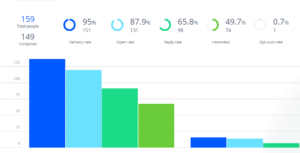 |
Remember, these are all people who’ve expressed an interest in our service. So even though 100% of these people have come to us to request a demo, only 87% are actually bothering to open our emails.
The other type of inbound request we receive is for a 14 day trial of the software. Here the open rates drop to 80% and the reply rate to 25%.
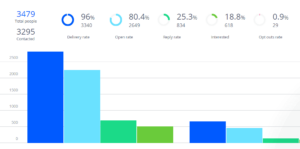 |
If we left it there, that’s a lot of inbound prospects not converting. So we don’t leave it there.
Now we nurture via marketing and our growth team. Those people who never responded, go into another funnel. We’re going to still message you, we’re not stopping there! This nurturing currently has a 12% conversion rate. But there’s still more. We then use social to re-target these leads, bringing in another 2-3% percent of those leads.
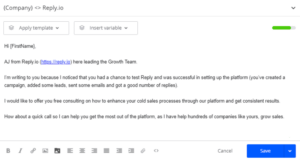
Now, in isolation that might not sound like a lot, but bring it all together and it adds up.
We’re not just sending you one email: Wham, bam and gone, hope you come back. We’re going to bring you through a complete cycle to convert the maximum number of leads.
Use your inbound leads to feed your outbound teams
Through the inbound process, you have the opportunity to learn a lot about your leads and customers. Your marketing team should be looking at what type of inbound users you’re attracting and using that to decide what kind of content you should be creating and marketing to those types of users. While that information can then be used to improve your inbound process, it would be a mistake to leave it there.
This is valuable information.
As well as inbound sales, we also use what we learn to improve our general marketing and social presence.
For example, you might see a significant proportion of your inbound leads are coming from unexpected markets.
Maybe your accounting software for SMBs is attracting interest from freelancers or enterprise level companies? Maybe your CRM SaaS for marketers is a big hit with recruitment agencies? By passing that information onto your marketing teams you can improve your targeting and possibly tap into new unexpected markets.
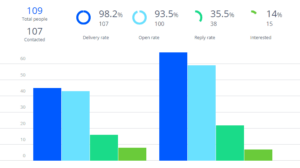 |
Share what you’ve discovered with your outbound sales teams and use it to optimize your outbound marketing messaging.
Revisit your messaging and tactics
No matter how much time and thought you put into your initial marketing and sales strategy, your marketing will change as your company grows.
Your target market when you’re a six-month-old company will be different to a well-established company.
We’re into our third year at Reply and we’ve seen our market grow from smaller businesses to enterprise-level companies. We’re still focused on SMBs, but now our marketing content is evolving as we see our target market change.
Many companies lack confidence in their inbound leads, realizing they’re not working properly but unsure of the problem. This leads to a watered down sales process and minimal conversions. Most of the time, this all starts with their marketing giving their audience the wrong message.
If you’re looking for a car online, you don’t fill out a form for frozen yogurt.
No-one’s ever said, “I was looking for a car but I saw this frozen yogurt and I figured I’d sign up for it.” It’s not going to happen. So if the equivalent is happening to you, you need to take a good long look at your messaging. Do your inbound leads know what to expect? Or are they expecting a car and getting frozen yogurt instead?
Match your message with your actions
Drift carried out a study of companies’ response times. Of the 433 companies they reached out to, only 7% responded within 5 minutes. The vast majority took over 5 days to respond if they even responded at all.
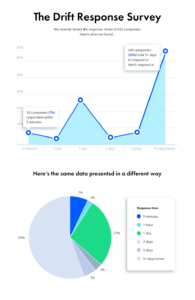
The study found that even a delay of 10 minutes in responding decreases the chances of qualifying a lead by 400% (compared to a 5-minute response).
This highlights one of the biggest mistakes I see companies making with their inbound leads. They may be getting thousands of leads but they lack a process to manage those leads. They fail to get those leads to sales in time. For them, their inbound sales funnel is just one big leaking bucket.
For us, when an inbound leads come in, they’ll be getting their first email from us within minutes.
But we’re not just sending emails. Anyone can send an automated email. To stand out you need to do more. At Reply, that first email is personalized and sent from a named salesperson, along with their personal, direct number.
We also have a dedicated sales number: +1 888 340 72 31.

Go ahead and give it a call, it’s toll-free.
A real person will pick it up. If we don’t answer it’s because we’re all on the phone, but, when someone leaves a message, that doesn’t get put off and forgotten. We have a sales and support team that follow up on any calls as soon as humanly possible.
Sure, you can automate a lot of the process, and I encourage you to do so.
Our whole business is focused on helping people automate the sales process. But automation is only good if you can back up what you’re saying with attention and action.
Build the A-Team of inbound
If you’re thinking this seems like a lot of work, that’s because it is.
Some people have the impression inbound sales is just a case of throwing up a blog post or sending out a funny tweet, then waiting for the leads to roll in. I hate to break it to you but that’s not the case, not if you want to see real results. It takes a lot of effort and a lot of communication.
Ideally, you’ll have a group of people to manage this process, all of whom need to be on the same page.

At Reply, we have our CMO who deals with product marketing and PR, a VP of Marketing, who handles SEO & content. A PPC specialist, a Growth manager, two Biz Dev reps nurturing and finding more contacts in these companies, an Email Marketer working on the drip campaigns via email and Messenger, a Designer who creates visuals, an Analyst who helps us build conversion funnels and track data, an SMM and a Front End dev.
That’s ten people working full time on our marketing and inbound processes.
It’s not something you can pass on to a part-time intern and forget about. Rather, make sure you have a reliable team focused on generating consistent inbound leads and sales.
Save money with the right software
To carry out a comprehensive inbound campaign, presuming you’ve got a smart team in place, they’re going to need the right tools.
You can’t just expect your team to be responding to all their leads and nurturing them with a standard Gmail account. The good news is, even if you’re short on cash you can get started without investing in a lot of software.
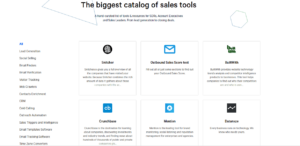 |
For your emailing and re-nurturing, Reply is an easy and affordable way to do the job. You can also use it to send marketing content to your leads, or if you prefer you could use a tool like Active Campaign.
When it comes to PPC and Facebook ads, you don’t need any fancy software or agencies. At Reply we take care of all this in-house. We’ve taught ourselves how to write high performing ads, and there’s no reason you can’t do the same.
By choosing your toolset wisely, if you’re willing to educate yourself to carry out the process all in-house, you can save money and still see massive results.
Effective Inbound Sales Takes Effort
Inbound sales are a powerful asset for any company, including Reply, but they also require an investment of time and money. It’s not a case of ‘Oh, you sent us an email, click the button, job done.’
You also have to keep working on your inbound process.
Is your messaging working? Does it need to be changed? Can it be optimized? Have our ideal customer profiles changed? Are we selling to the same people? Are we getting too many small/big leads? You have to be asking yourself these questions all the time.
However, by following these tactics and avoiding the common mistakes your competitors are making, you can enjoy a regular stream of interested prospects who convert to happy paying customers.
Want to learn more about how Reply can help you with both your inbound and outbound sales? You can sign up for a demo here, or if you’d prefer to talk with one of our team then drop us an email at sales@reply.io and we’ll get in touch.


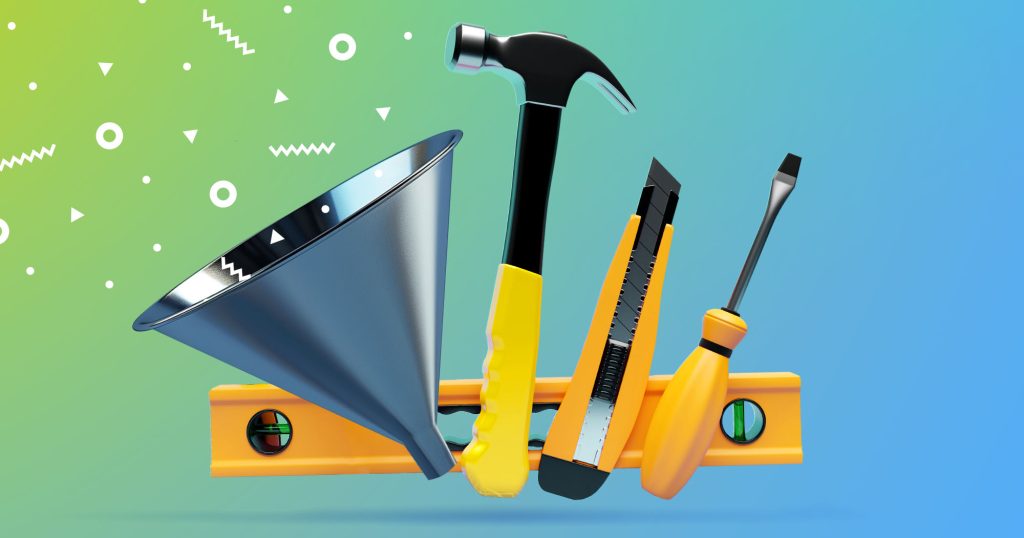

![Upselling and Cross-selling: The Go-To Guide [+7-Step Framework Inside] Upselling and Cross-selling: The Go-To Guide [+7-Step Framework Inside]](https://reply.io/wp-content/uploads/upsale-1024x538.jpg)
